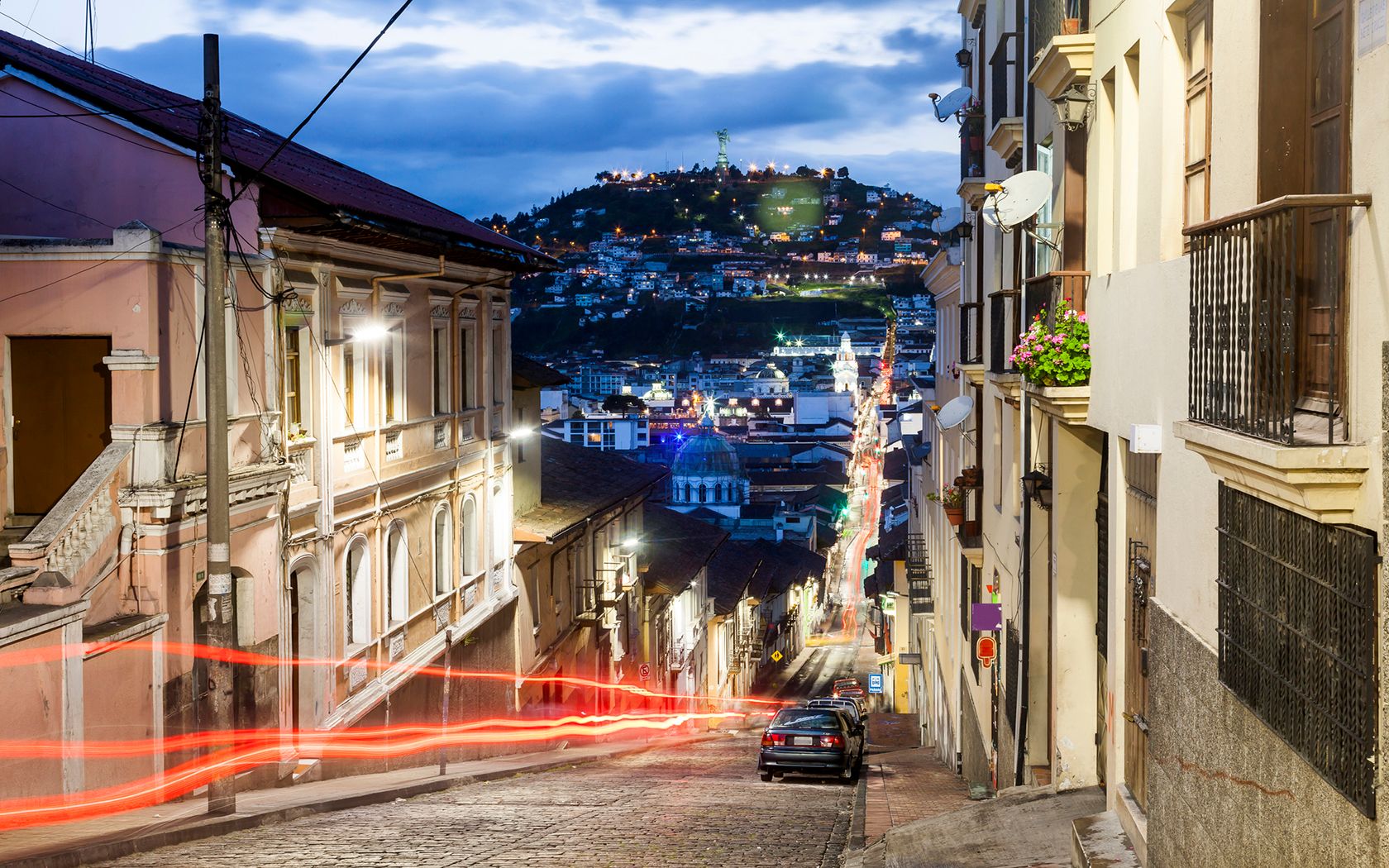The noisy, jam-packed streets of Quito may seem a little overwhelming at first but you’ll soon get accustomed to navigating them, and the Latino way of driving. Unless you’re in the old town or Mariscal (new town), walking isn’t the best way to get around as the sidewalks are narrow and certain parts of the city are dangerous but public transportation is widely available and affordable. Here’s our guide to the best transport options in Quito and how to use them.
Trolleybus
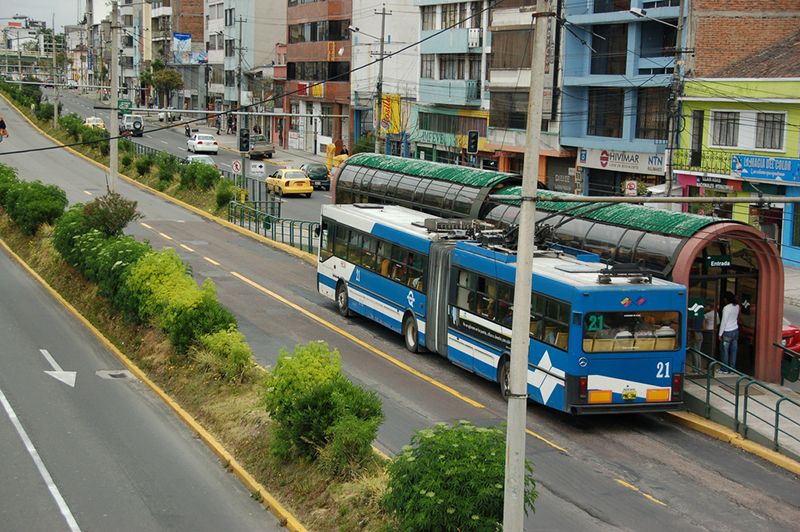
Quito has three electric trolleybus lines (the Trole, Ecovía and the Sur Occidental) that run from north to south connecting the old town with the new town via the city’s main avenues. The Trole line runs through the middle of the city along Avenida 10 de Agosto and Maldonado and links Carcelén bus terminal in the north with the Quitumbe bus terminal, just southwest of the old town. The Ecovía line runs along the eastern Avenida 6 de Diciembre, one of the major streets, between Río Coca and Quitumbe, while the Sur Occidental runs along the western edge of town, along Avenida América between La Ofelia bus terminal in the north to Quitumbe bus terminal in the south.
Confused already? Check out all the routes, stops and timetables for the three lines here. A one-way ride costs around 25 cents and keep a stack of change in your pocket as the turnstiles only accept exact change. If you find yourself short, the stations have change machines but you might have to queue. The trolleybuses run from around 5am until midnight and are a speedy way of getting around town as they use car-free lanes. Just watch your belongings as they can get very crowded and pickpocketing is common.
Buses
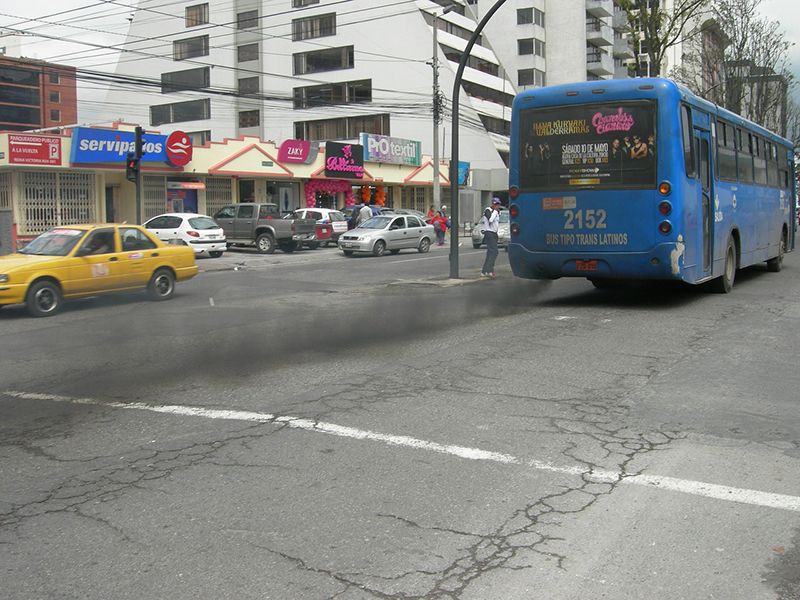
Quito also has an enormous and somewhat complicated network of buses. The lack of assigned route numbers makes it confusing at first, until you get your bearings. In the new town, buses usually run along Avenida Amazonas and Avenida 12 de Octubre. If you’re only going a short distance along these streets, it’s easy to hop on and off these buses as they stop at most street corners and you can flag them down. Most buses do have their final destination and starting point displayed in the front window so, once you get to know the city a little better, you’ll be able to work out which buses to get on and which not to. As with the trolleybuses, a single journey is 25 cents. Just steer clear of the back of the buses and the black fumes coming out of the old exhaust pipes.
Taxis / Ubers
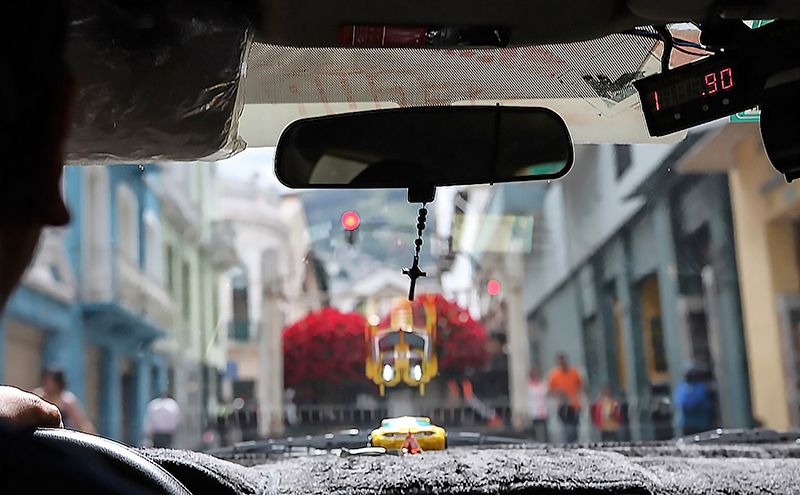
The streets of Quito are teeming with yellow taxis and they’re cheap and easy to hail down (with most journeys around the city costing just a few dollars). Drivers are required by law to use the meter, but many don’t, particularly at night. If the taxi has a meter (taxímetro), try to insist that the driver use it and if they refuse, get out and find another taxi or negotiate the price before you set off. Ask your local friends and contacts what the going rates are for different journeys so that you have an idea of what it should cost. If you can’t find a cab, the staff at most restaurants, hotels, and bars will be happy to call a cab for you but keep City Taxi (2633 333), Taxi Amigo (2222 222) and Taxi Express (2500 600) stored in your cellphone. You can also download taxi apps like Cabify. Uber also now operates in Quito and saves awkward negotiations with taxi drivers. Quito can be dangerous at night, so it’s best to take a taxi or Uber wherever you go, no matter how short the distance.
Bicycles
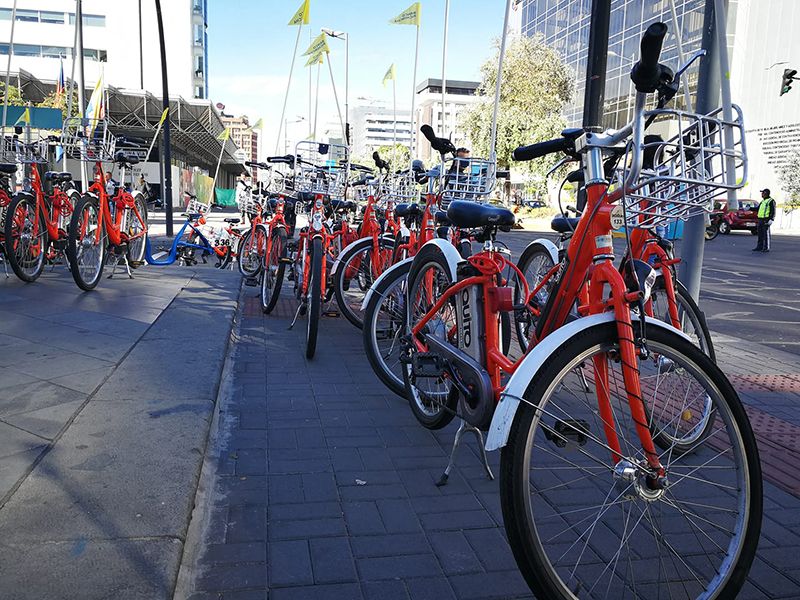
Like many other cities around the world right now, Quito is encouraging people to trade motorized vehicles for their bikes. Not only is it good exercise but it’s also far better for the environment so you can pat yourself on the back twice. The city’s BiciQuito program offers free bikes to all residents, with pick up and drop off stations dotted around the city. To be able to use the bikes, you need to download and fill out an inscription form on the website and then take it to the Agencia Metropolitana de Tránsito (Av. Amazonas N33–299) with a color photocopy of your passport and Ecuador entry stamp to register. You’re then free to hop on and off the bikes at your leisure. Sundays are a perfect day for a bike ride around the city when key streets are deliberately closed to traffic allowing for ciclopaseos.
Metro coming soon
In an attempt to reduce the city’s congested roads, the underground Metro de Quito is also set to open in mid 2019. The first line will connect Quitumbe in the south with El Labrador in the north stopping at various convenient points, with other lines scheduled for completion at a later date.
Got any other advice for getting around in Quito? Share it with our readers in the comments section below.
Originally published on Ailola by Sophie Lloyd on August 14, 2018.
